Review
The DJI Phantom 3 drone is one of the best selling drones of all time and we're excited to provide you with our long term review of DJI's ready-to-fly quadcopter .
The question that many readers might have is: Is the DJI Phantom 3 still relevant with the Phantom 4 and the Mavic Pro being out? Can it still compete?
Yes, yes and yes... because it offers by far the best value.
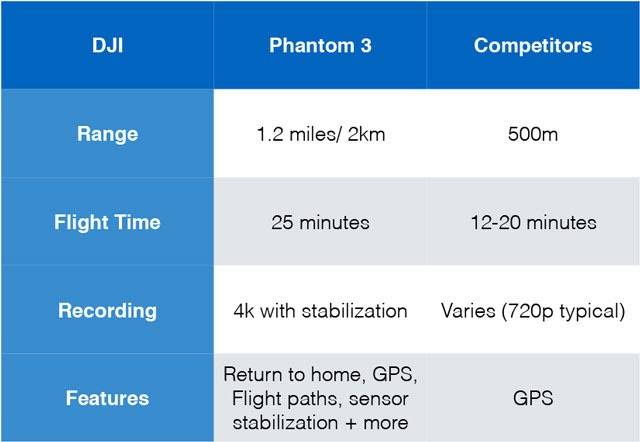
At first glance, the Phantom 3 looks deceptively similar to other drones in the Phantom series. In fact, it looks nearly identical so it would be normal to assume not much changed.
But you'd be wrong, dead wrong.
The new Phantom 3 is light years ahead of the previous generation of ready to fly drones (like the Phantom 2 Vision) and leaves most other manufacturers in the dust.
The reason for the new performance is mainly due to new motors and a new optical sensor underneath the quad. The new sensors help stabilize the drone to a new level of accuracy making it the most stable quadcopter yet in this price range.
That means that flying is now easier and filming is vastly improved thanks to the improved stability system.
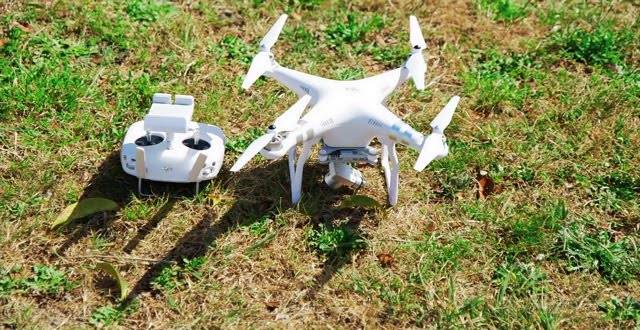
New Drone Stabilizing Sensors
The new DJI Phantom 3 borrows it's sensors from the flagship Inspire drone, which was the first one to be fitted with sonar-type sensors underneath the drone that provide positional data so the quadcopter can hover in a precise spot even when GPS isn't available. This means that if you're going to do any indoor flying, this is the drone to have.
Indoor flying with the DJI Phantom 3
Most modern drones rely on GPS for positional data and that's the thing that allows them to hover a specific spot. Although the Phantom 3 also comes with GPS tracking for positional data, it automatically switches to the optical sensors when the GPS isn't available. (This happens a lot if you're flying indoors, in places with a lot trees or even places with a lot of interference.)
These sensors act a little like the bottom of your computer's mouse in the sense that they track what's underneath to determine the position. In the DJI Phantom 3, this translates to being able to hold the same fixed position in the face of crosswinds and external disturbances. If you've done extensive flying indoors, you'll know that turbulence from the wind bouncing off walls and objects will tend to influence the flight of most drones so this new sensor stability will be a welcomed feature when you have no GPS data.
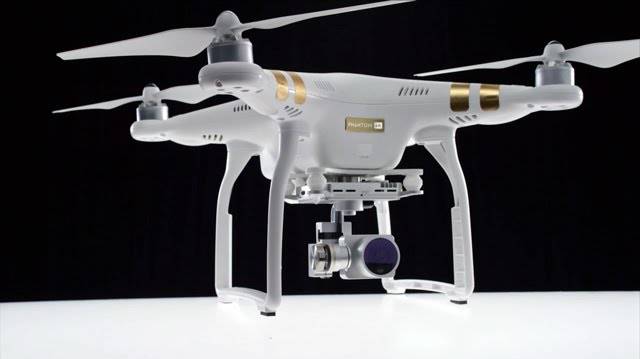
Improved GPS positioning
Speaking of GPS, the new Phantom's 3 global positioning system is even better this time around as it now has access to more satellites than before. (Apparently they signed a deal that allows them to use additional GPS satellites for more accuracy and redundancy. This means that you'll have even more coverage and accuracy.)
Even though I never really had an issue with the GPS of previous models (maybe I'm just lucky or it's where I fly), the new coverage should help keep your drone exactly where you want it to be. DJI is also developing flight paths and trajectories so you'll want to have ultra accurate positioning for that.
More Efficient Motors
The motors have also been upgraded with the new Phantom 3 drone. This is a big deal because the old motors have been replaced with new, more efficient motors which translates directly into longer flights. Before, we used to get a solid 15-20 minutes of flight time with the previous Phantom 2 and now, we're getting a solid 20-25. I know this might not sound like much, but a whole 5 minutes more of flying is a lot! (25% more!)
If you're like me, you're going an extra battery on hand as well which means we'll be airborne for a long time before having to break to charge anything. Speaking of charging, you'll want to get the professional version of the Phantom 3 to have access to the new super speedy charger. Charges vary in time, but needless to say, it's fast.
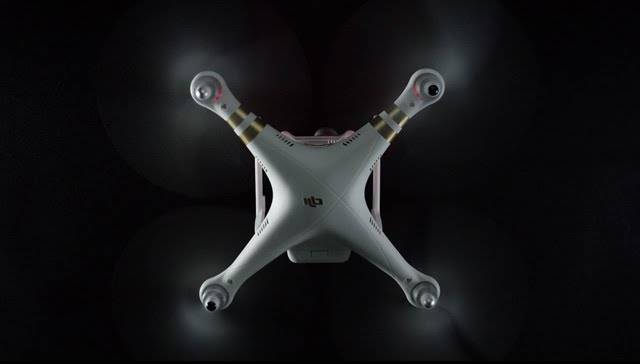
Charger Tests and Batteries
In our charge time tests for the DJI Phantom 3 battery, we measured 29 minutes to fully charge with the pro smart charger. That's quite an impressive feat considering we're used to having to spend a few hours charging our other batteries. This means that if you get yourself 2 batteries, you can fly with almost no downtime. (Technically, you need three for continuous flight times seeing as it takes a little longer to charge than it does to drain the battery but two will get you pretty close.)
The batteries aren't cheap but you can often get a Phantom 3 bundle with an extra battery. Alternatively, you can pick one up separately for nearly the same amount but unlike the smaller drones that only provide you with 6 minutes of flight time, the Phantom 3 goes a long time so it's entirely possible to get by with only one battery. (Although personally I happen to have 3 of them so I'm a little bias)
The only downside with having all this new technology is that the older batteries of the Phantom 2 are not compatible with the new one. So if you have a bunch of Phantom 2 batteries lying around, you're out of luck!
The Phantom 3 Flight Test
My first impressions when flying the Phantom 3 was... "Wow, this is just like the older model except much more stable!" It has the same intuitive (and frankly, super easy) except that it feels much more solid, stable and predictable. If other drones are bees buzzing around, this is a swan having a smooth flight.
Although flying is always a very personal opinion, when you fly the Phantom 3, you feel confident that your manoeuvres will be well executed. It turns just at the right speed, moves quickly when you want it to and slowly enough for some great cinematic shots. You get the feeling that when the engineers designed it, they weren't just thinking: "How fast can it go?" but instead "What's the ideal speed we want this drone to go?". (The official speed is rated at 35mph.)

Drone Speed: The Cinematic Shots
Trust me when I say, it's fast enough to chase cars, boats and whatever you want to film but the beauty is when you want to have smooth panoramic shot of your favorite place. On a side note, when you're chasing something fast like a speeding car, my recommendation is that you start filming at a lower altitude and pull up into the sky as the car pulls away. This gives it that cinematic feel that we have been used to in the movies. Get it right and you'll practically be able to publish your shots directly from the drone. Whatever vision you have, you'll likely be able to execute it.
Phantom 3 Range
In terms of range, the official range of the DJI Phantom 3 is 1.2 miles (nearly 2km) which is huge and vastly superior to most drones currently on the market. This type of range opens up a whole new world of possibilities (any further and you're going to have trouble seeing the drone). You just have to make you take into account the duration of the battery when traveling these distances. As great as the range is, it isn't perfect. As with all radio 2.4Ghz controlled devices, the range will vary drastically depending on the interference around you. That means that although you might not get that range in a busy city area, you'll still get a very respectable range. (More than sufficient for any applications).
Flying Safety: Return To Home and Limits
In addition, the DJI features a return-to-home feature which will give your drone back in the event that it loses contact with you. This is one of those live saving features that you are very fortunate to have when you need it. That features provides the peace of mind that your investment will always come back to you.
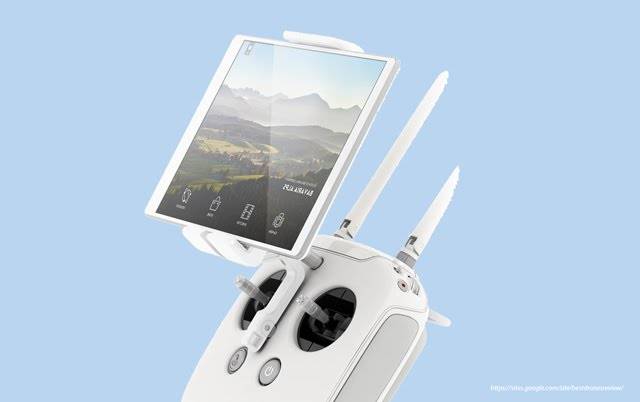
In terms of features, there are a few other ones worth mentioning. One of them is that they soft-cap the ceiling (maximum altitude) at 400 feet. This is a safety measure so you don't run into territory that you aren't supposed to go into. When I first heard about the limit, I thought "Hey, don't limit what I can do!" however after flying around quite a bit I must assure you that 400 feet is quite high (more than enough for your panoramic shots) and it also reassures me that I won't get into trouble for flying somewhere I'm not allowed to go.
There is also a feature that limits you from going into restricted areas. (So you won't be flying over airbases or airports) which is the way it should be. Trust me, the last thing you want is to be on CNN for being 'that guy' that got into trouble for flying his drone into restricted airspace. I don't like limits, however, I do like sleeping at night and feeling safe when I fly.
The DJI Phantom 3 provides me with all the fun, all the power and none of the worry.
Review Conclusion
Overall, the DJI Phantom 3 proves to be one of the best drones currently on the market and we suspect it will remain the king of the pack for quite a long time. It takes off where the Vision left off with it's improved battery life, industry leading stability, refined software and feature set and upgraded camera, it doesn't get much better than this.
The only challenge at the moment is actually getting your hands on one of them. We've found that Amazon fulfills the orders the fastest (and they receive stock before others) in spite of the huge demand. DJI can barely keep up with the demand at the moment so hopefully this is less of an issue soon!
Link: https://www.dji.com/phantom-3-se?site=brandsite&from=nav
Reactie plaatsen
Reacties